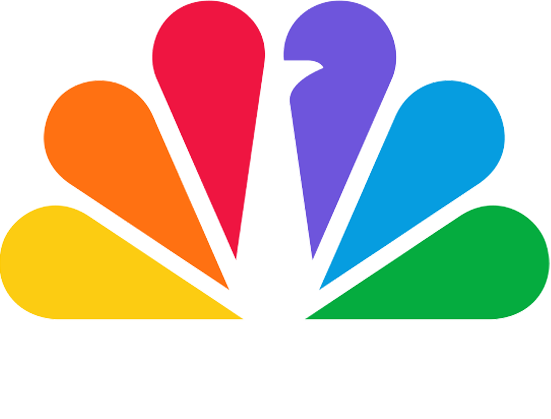WHEN: Today, Wednesday, February 12, 2025
WHERE: CNBC’s “Squawk on the Street”
Following is the unofficial transcript of a CNBC exclusive interview with Bank of America Chair & CEO Brian Moynihan on CNBC’s “Squawk on the Street” (M-F, 9AM-11AM ET) today, Wednesday, February 12. Following is a link to video on CNBC.com: https://www.cnbc.com/video/2025/02/12/bank-of-america-ceo-brian-moynihan-our-research-team-has-taken-all-rate-cuts-off-the-table.html.
All references must be sourced to CNBC.
LESLIE PICKER: Good morning. I am here with Brian Moynihan, the Chairman and CEO of Bank of America. Brian, thank you very much for being here from your financial services conference. Rates in focus this morning. Chair Powell is on the Hill. We got the CPI number this morning. How does that change your assessment of where rates go from here and what that means for everything from loan demand to investment banking activity?
BRIAN MOYNIHAN: So let’s talk about a couple different things. One is our research team, Candace Browning-Platt is a very strong research team, was the reason why we’re here. They had taken all rate cuts off the table in their research. The market had one still left in. They had zero. And it was because they thought that the dynamics of the inflationary effect and the potential inflationary effect would cause the Fed to hold back and those rates are restrictive, but there was not enough sort of inflation progress could be made. Inflation would stay in the high twos through ’25 and ’26, and ultimately they would start cutting rates then and bring it to maybe three and a half, four. So that was their basic. The other thing is, if you look at the consumer activity, as you came through the fall, summer in the fall, it had slowed down. It kicked back up once the Fed started cutting rates. And now for the first 40 days of the year, our consumers are sending about 6% more money into the economy than they did last year for the first 40 days. And so if you think about that, that’s a little faster than it was for the fourth quarter, sort of four and a half, five, six, which the money’s moving, which means enthusiasm for everything going on in the stock market being up and people taking trips and stuff that’s going out in the economy. And so I think that’s helped drive, you know, that’s driving price firmness, demand firmness. You know, that’s a lot of money. It’s a $4 trillion a year, goes through our customer accounts. So you’re seeing that activity that says that we’re probably in a period where rates are going to stay kind of where they are for a while until this settles in.
PICKER: It’s one of the big reasons why everyone’s been so excited about bank stocks. And we’re here, of course, at the financial services conference. As your analysts put it, rates was a key component, rates, regulation and resumption of client activity. Does this kind of pour cold water on the whole bank’s thesis and the upside on bank stocks?
MOYNIHAN: Remember the projections we gave at our earnings call a few weeks ago was to be up 6 to 7% in net interest income, ’25 versus ’24. That had one rate cut in it because that’s what the market was. So the idea of one less rate cut will actually, when you have a bunch of zero interest accounts, they make a little bit more money. The question is, what’s the constraint on activity? And if you look across the activity level, the consumer spending, we had good loan demand when rates were where they were in the fourth quarter, you know, year-over-year loans were 3% up, commercial loans, excess CRE business, which, you know, commercial real estate, which has been going down, was up 6 or 7% year-over-year. Consumers up 1%. But you saw areas were stronger. So we saw good loan growth and, you know, that’s good. And so the amount of activity, the profit margins are strong. It can withstand this higher rate. It has. The question is, how long can it withstand it? And that’s going to be down to some of the policies and tariffs and all this stuff and how people assess them. The real impact of rates, though, is in small, medium-sized borrowers because they borrow on lines of credit. And so their basis was 50 basis points. So for back then, now, you know, 4%, that’s 350 basis points more they’re paying for a line usage. And so their line usage is still muted. And so until those rates come down, there’ll be less enthusiasm there. The mortgage market’s obviously slow. You know, car buying will bounce around because the rate structure passes through there. So the impact in economy is much more complex by types of customers. But everything we see, and for banks, was the activity consistent with a Fed funds rate where it is, is going on. And so that will happen. On the market side, spreads are tight, you know, the capital markets are open. The IPO market really is a question. And will people feel confident enough evaluation drive-through? IPOs are up a lot more than the general market last year. Year-to-date they’re up a lot more. But the question is, that’s driven by a narrow set of IPOs versus a broad base. And we expect that to come. The pipelines are full. And I think that’s a stability question. It’s not going to be sensitive to 25 basis points or not on the Fed funds rate. It’s really not.
PICKER: And that speaks to your earlier point about just corporate confidence. And a few weeks ago in Davos, you asked President Trump what his executive orders meant for growth. He said they would be great for growth. I’m curious if you’re hearing the same thing from clients. Because there’s been a lot of reporting, when I talk to sources as well, that a lot of the uncertainty has kind of created a chilling effect, in that a lot of C-suite executives want to pause and see how everything filters out before engaging in big transactions.
MOYNIHAN: I’d say especially for multinational companies, because for every reaction, there’s an even opposite reaction. And they’re trying to figure that out. Because, you know, if you’re bringing materials in, and they come with tariffs, and how do you pass that through? So that’s going to cause it. Now we’re 39 days in here, or something, whatever the math is for the new administration. So they’re putting a lot of things out there, trying to hit the ground running. So I think it’ll just take a little while. But in the grand scheme of, you know, four years, in the grand scheme of, you know, these companies, it’s a little uncertainty until they see this settle. And it is causing people to say, wait a second, how will this affect me? Especially people who deal across borders and stuff like that. For the local U.S. economy, the deregulation’s high hope. Interest rates being higher, it has been a countervail. The ability to get employees has now surfaced by our customer data. That question is probably nothing really happening. But their fear that they may lose employee capacity to immigration policy, and not be able to make it up by efficiencies fast enough. So businesses are paid to worry about the future. That’s what we, the CEOs of all size businesses, you know, even the entrepreneurs, it’s their money, they’re worried about it. So they’ll worry about this. But I think as you see the things move from the thoughts of policy to actual policy, that stability would be very helpful. And I think lessons learned is you make a lot of change fast, people stand back. It’s OK as long as you follow through and get stability, and we’ll see what happens.
PICKER: And speaking of Davos, you participated in a roundtable. You were able to ask that question of President Trump. And then at the end of his answer, he told you that, quote, “I hope you start opening your bank to conservatives,’ adding, quote, ‘what you’re doing is wrong.” What was going through your mind at that moment?
MOYNIHAN: Well, what was going through my mind is we bank 70 million American consumers so our bank is open to everybody. And so the question he was really after is overregulation. And it’s around this question of, you know, the BSA/AML. And, you know, at the end of the day, we have rules that haven’t been changed in 50 plus years. So the currency transaction report level in the United States is $10,000. When it was put in, somebody said to Congress the other day, you could buy a fully loaded Cadillac for $10,000. I think now you can’t buy a new car of any sort for $10,000. So we haven’t indexed these things. So it’s causing a lot of activity. And the overregulation of that and the inch-wide, mile-deep hole our industry’s in by compliance with that, you know, the regulators would come in, there’s no upside. So what happened is we go back to Caribbean countries, which have been a talk of years of debanking Caribbean countries. It was because we had to know their customer’s customer. If it came back to other activities, we’re responsible not only for a customer, but for what goes on in their business, which is different in most industries. So this idea of getting this regulation straight, we’re fully in favor of, and we’re trying to help do that. And so the question was, he was talking about debanking and regulation. And if you heard the rest of his response, it was, you know, look, the last administration, we agree with, we have to get this back in balance.
PICKER: Have you spoken with him since then? Because he didn’t respond in the moment. I’m curious if you’ve spoken with the president since Davos.
MOYNIHAN: I have not. I have not spoken to him. I’ve spoken to parts of the administration. We continue in Congress to continue private input for the industry. This is an industry-wide problem that we’ve got to fix.
PICKER: All right. Well, Brian Moynihan, really appreciate your time today. Thank you very much for joining us from your financial services conference.
For more information contact:
Jennifer Dauble
CNBC
t: 201.735.4721
m: 201.615.2787
Stephanie Hirlemann
CNBC
m: 201.397.2838

















